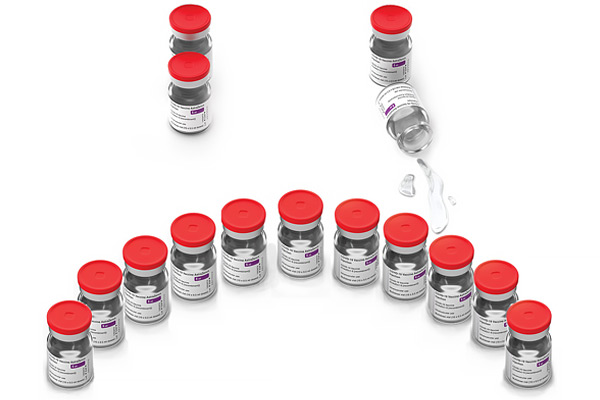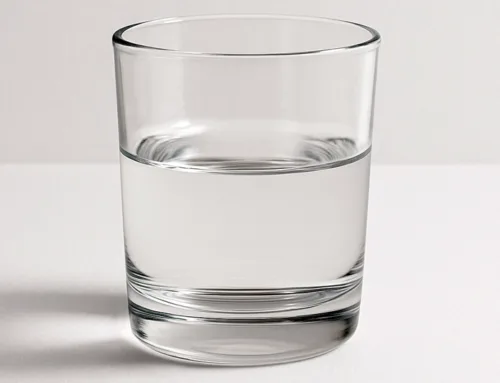From a product development point of view, the Oxford–AstraZeneca COVID-19 vaccine is a miracle. It is the world’s best single hope in defeating the COVID-19 pandemic. But it’s also a marketing failure. This is significant because it means people have lost trust in the vaccine, and that could negate the miracle of it.
The Product Miracle
Marketing people need to be cautious of intelligence-signalling outside their purview. Chastened by this belief, we used Sir John Bell, Canadian immunologist [1], and others, for background research. So far, the Oxford-AstraZeneca COVID-19 vaccine is the world’s best option because it is:
- Very effective in traditional vaccine terms
- Very inexpensive—$2-$4 (USD) per dose
- Easy to manufacture at the scale necessary to immunize everyone on the planet
- Easy to transport and store because it only requires regular refrigeration
The Brand Fail
To be specific, this is a PR fail. There aren’t a lot of marketing communication elements a brand can use or control in a pandemic. Scientists handle product development and pricing is simple cost or cost plus.
The Oxford-AstraZeneca vaccine was designed by medical academics at Oxford University, led by Professor Sarah Gilbert. Their goal was to save the world. Not to win a Nobel prize or make money. AstraZeneca was recruited as pharmaceutical manufacturing partner. To their credit, they were the only major pharmaceutical company who would agree to Oxford’s mandate of not making a profit in the first year and a focus on worldwide distribution. But they were inexperienced in vaccine manufacturing and distribution, which usually includes the human clinical research phase. In this case, Oxford did the first three clinical trials in the UK, Brazil and South Africa.
The first problem was the worst in that it exponentially amplified all that followed and brought politics into play:
“After Admitting Mistake, AstraZeneca Faces Difficult Questions About Its Vaccine”
—The New York Times, Nov 25, 2020.
“U.S. Health Officials Question Results from AstraZeneca’s Vaccine Trial, Less than a Day After They’re Released.”
—The New York Times, Mar 23, 2021
“AstraZeneca Vaccine Faces New Setbacks in U.K. and European Union”
—The New York Times, Apr 7, 2021
What the Science Says
We’re still learning, but the Pfizer-BioNTech, Moderna and Oxford-AstraZeneca vaccines have all shown 100% efficacy against severe disease and death from COVID-19. This is the purpose of vaccines. The efficacy numbers the public has been exposed to relates to preventing mild to moderate symptomatic disease. Efficacy of all three vaccines in use continues to outperform Phase 3 trial results. AstraZeneca’s only weakness seems to be against the South African variant, but testing there used an unusually short two-week dosing interval and was stopped early on.
Research shows the risk of blood clotting in the brain (CVT) after mRNA (Pfizer & Moderna) vaccination is 4 per million, 10 times less than the risk of CVT from COVID-19, and that the risk after viral vector vaccination (AstraZeneca & Johnson&Johnson) is only 1 per million more [2]. Real world experience can be different based on many factors, including the type and location of the clotting. So despite the research above, the US has no reported cases of blood clotting after 200 million doses of mRNA vaccine—but they would need to be looking for the possible causal link to find it.
Based on recent experience, several European countries and Ontario, Canada, have estimated their risk of blood clotting after AstraZeneca vaccination at 1 in 100,000. This has lead to the proposition that viral vector vaccines may cause rare vaccine-induced blood clotting called TTS or VITT. At least some cases, the occurrence of this has been communicated in the media before verification that the clots involved were of the vaccine-induced type [3].
The world cannot return to normal, in terms of travel and the economy, until the whole world is vaccinated to herd immunity level—75%-80%. That means including the under-developed world, where under-reporting of COVID-19 infection and death is rampant and massive.
What the Marketing Says
Somewhere between the altruistic save-the-world idealism of the Oxford scientists and AstraZeneca’s vaccine-specific inexperience, the partners have failed in the marketing of their product miracle. They’ve admitted their mistakes (PR 101) but they keep making them. Pfizer, as pointed out by Mark Ritson [4], is the clear vaccine brand winner in this pandemic. As profit-motivated, savvy marketers, they are already talking about a price increase for their vaccine [5] and the tens of billions of dollars they will make.
Scientists are good with scientific concepts like efficacy ranges, rigorous qualification of claims and the idea that important statements should be constantly updated as new data comes in. In the context of a pandemic, the general public is not. Pfizer and Moderna knew this.
Still, the Oxford-AstraZeneca vaccine remains the world’s best single option for defeating COVID-19. If only the world would believe it. And if only—in this one case—managing your brand image didn’t matter so much.
- Mansfield Public Talk: After Covid – the G7 Pandemic Task Force and how to combat future pandemics, youtube.com, Mar 2, 2021
- Professor Paul Harrison & Dr Maxime Taquet, “COVID-19 leads to a several-times higher risk of cerebral venous thrombosis (CVT) blood clots than current COVID-19 vaccines.”, University of Oxford, Apr 15, 2021.
- The study referred to in footnote 2 makes its claims based on rare blood clotting in the brain (CVT). A more common blood clotting location/type associated with COVID-19 infection is abdominal. The Oxford study showed a 10-fold reduction in PVT (clotting in the portal vein to the liver) with mRNA vaccination.
- Mark Ritson, “And the winner of the Covid vaccine brand battle is…”, marketingweek.com, Feb 25, 2021.
- Swikar Oli, “Pfizer exec sees ‘significant opportunity’ to increase COVID vaccine price for annual booster shot”, The National Post, Mar 16, 2021.






Today, Oxford University researchers published results of a non-clinical (real world) UK study. The vaccines from both Pfizer and AstraZeneca were over 90% effective against the variants of greatest current concern: Delta and Kappa. In this context, protection is defined as preventing hospitalisation. Parity performance with Pfizer is good news for the AstraZeneca brand and for the world.
This week, new research by Airfinity shows that approximately 20M lives have been saved by COVID-19 vaccines so far. The leading life-saver is branding-loser AstraZeneca, followed so closely by branding-winner Pfizer that the researchers decided to call it a tie. M ost importantlyAstraZeneca
Source: https://www.economist.com/graphic-detail/2022/07/13/which-covid-19-vaccine-saved-the-most-lives-in-2021
This week, new research by Airfinity shows that approximately 20M lives have been saved by COVID-19 vaccines so far. The leading life-saver is branding-loser AstraZeneca, followed so closely by branding-winner Pfizer that the researchers decided to call it a tie. Sometimes, here are things more important than branding.
Source: https://www.economist.com/graphic-detail/2022/07/13/which-covid-19-vaccine-saved-the-most-lives-in-2021